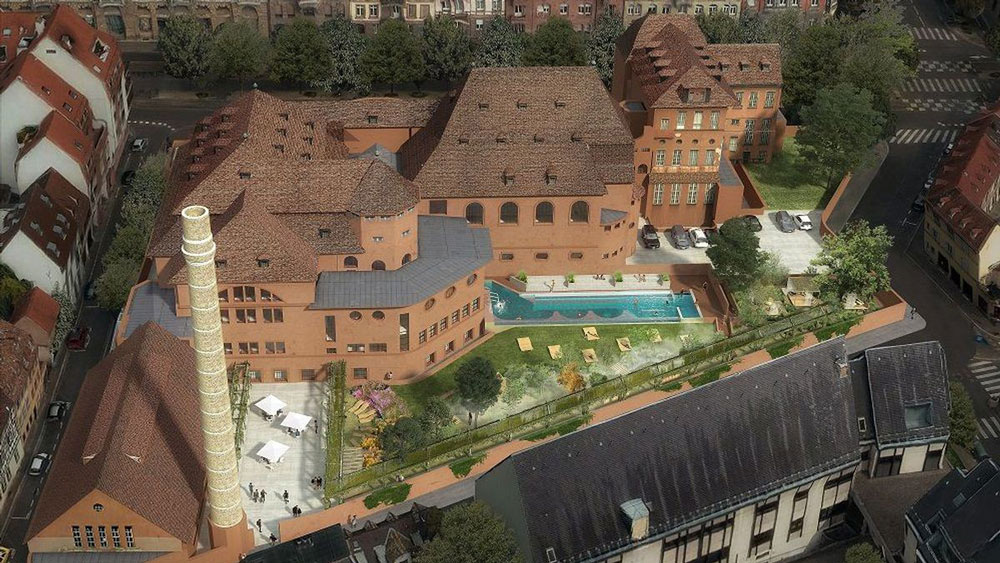Strasbourg’s Municipal Baths
November 29th 2020, by Elise
Today I would like to tell you about Strasbourg’s Municipal Baths, situated within a very beautiful building that takes an important place in the city’s history. What could be better in Covid times than to talk about municipal baths as they must be all closed?
The building of the Municipal Baths has been registered as a historical monument since the year 2000 and has been classified as a historic monument since 2017 (“registered” corresponds to a regional scale of protection, while “classified” corresponds to a national one).
This building in the heart of the Neustadt was built between 1905 and 1908 by the German architect Fritz Beblo. It should be noted that the construction of this building was the most prestigious and the most expensive one for the municipality at the time, around 1.5 million marks. Importantly at this time, the swimming pool is an answer to the need for hygiene and not to the concept of sport or well-being that we currently know.
Indeed, all Strasbourg residents do not yet have running water at home, and bathtubs are reserved for a certain social class, the bourgeoisie. The construction of municipal baths therefore meets the needs of the population, which increased considerably in the period that goes from 1870 to 1910.
The establishment will be nicknamed the “temple of hygiene”.
Two years after its inauguration, the Strasbourg institution has become a model for both Germany and France.
In Germany, it will get the mention of “mustergültigen Anstalt für Schwimmwannen, sanitäre und Sonnenbaden” (‘Exemplary institution for swimming pools, sanitary and sunbathing’). Not an insignificant mention given the number of achievements reached here and on such a level as to compete with modernity. On the French side, there is no comparable institution, the Strasbourg’s baths appear to be an achievement of excellence. They will become a model for the rest of France and will inspire all municipal bathhouses built in the inter-war period, notably in Paris, Rennes and Lyon.
Later they will inspire many other projects such as the baths of Mulhouse (1911-1925) or the interior of the “Stadtbad” (city-baths) of Halle, in Germany (1913-1915), in particular with the arched skylights, but also the interior of the “Müllersches Volksbad” in Munich.
To put it in a nutshell, you will understand that these baths are a little treasure of the city. They were open until 2018.By then, one could boast that no major changes had been made so far.
However, following maintenance and financial problems, the city of Strasbourg submitted a renovation project to private companies, yet this created an uproar.
This building shall finally be renovated by the Eiffage Construction team and is designed by the architect François Châtillon.
Obviously, when one thsinks “2020”, one thinks about “modernity and luxury” as well. The Roman baths will be kept but decorated with an ice shower, there will be outdoor baths, a gym, a sauna and a hammam. The institution will look much more like a luxury spa than a swimming pool. However, it would seem that those who only wish to access the swimming will be able to do so.
One last fun fact about the municipal baths : they have not only welcomed simple swimmers over the years but have received a lot of artists of all kinds. For instance, models! We found in the archives pictures of a fashion show in 1990, an a cappella vocalist recording in 1984, a floral exhibition in 2004, a dance show in 2009 and, better known, the French singer Patricia Kaas shot her video clip “Madame Tout-le-monde” (“Mrs Everyone”) there in 2016.






